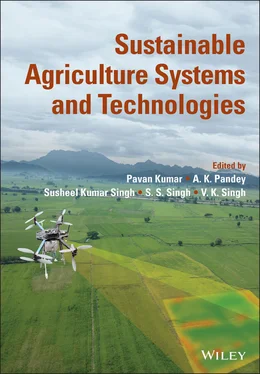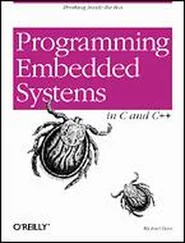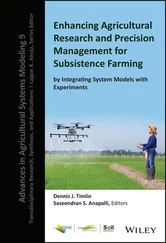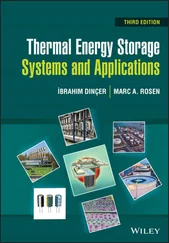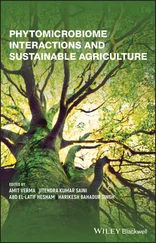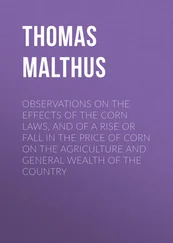Sustainable Agriculture Systems and Technologies
Здесь есть возможность читать онлайн «Sustainable Agriculture Systems and Technologies» — ознакомительный отрывок электронной книги совершенно бесплатно, а после прочтения отрывка купить полную версию. В некоторых случаях можно слушать аудио, скачать через торрент в формате fb2 и присутствует краткое содержание. Жанр: unrecognised, на английском языке. Описание произведения, (предисловие) а так же отзывы посетителей доступны на портале библиотеки ЛибКат.
- Название:Sustainable Agriculture Systems and Technologies
- Автор:
- Жанр:
- Год:неизвестен
- ISBN:нет данных
- Рейтинг книги:5 / 5. Голосов: 1
-
Избранное:Добавить в избранное
- Отзывы:
-
Ваша оценка:
- 100
- 1
- 2
- 3
- 4
- 5
Sustainable Agriculture Systems and Technologies: краткое содержание, описание и аннотация
Предлагаем к чтению аннотацию, описание, краткое содержание или предисловие (зависит от того, что написал сам автор книги «Sustainable Agriculture Systems and Technologies»). Если вы не нашли необходимую информацию о книге — напишите в комментариях, мы постараемся отыскать её.
A robust treatment of traditional and new techniques in sustainable agriculture Sustainable Agriculture Systems and Technologies,
Sustainable Agriculture Systems and Technologies
Sustainable Agriculture Systems and Technologies — читать онлайн ознакомительный отрывок
Ниже представлен текст книги, разбитый по страницам. Система сохранения места последней прочитанной страницы, позволяет с удобством читать онлайн бесплатно книгу «Sustainable Agriculture Systems and Technologies», без необходимости каждый раз заново искать на чём Вы остановились. Поставьте закладку, и сможете в любой момент перейти на страницу, на которой закончили чтение.
Интервал:
Закладка:
Table of Contents
1 Cover
2 Title Page Sustainable Agriculture Systems and Technologies Edited by Pavan Kumar College of Horticulture and Forestry Rani Lakshmi Bai Central Agricultural University Jhansi, UP, India A.K. Pandey College of Horticulture and Forestry Rani Lakshmi Bai Central Agricultural University Jhansi, UP, India Susheel Kumar Singh College of Agriculture Rani Lakshmi Bai Central Agricultural University Jhansi, UP, India S.S. Singh Extension Education Rani Lakshmi Bai Central Agricultural University Jhansi, UP, India V.K. Singh ICAR‐Central Research Institute for Dryland Agriculture Hyderabad, Telangana, India
3 Copyright Page
4 List of Contributors
5 Preface
6 About the Editors
7 Foreword 1
8 Foreword 2
9 Section 1: Food Security and Agrarian Livelihood 1 Agriculture and Nutritional Security in India 1.1 Introduction 1.2 Growth of Agriculture in India 1.3 Dynamics of Under Nutrition in India 1.4 Institutional Interventions to Cope Up with Malnutrition 1.5 Policy Implication 1.6 Conclusion References 2 Diversification for Restoration of Ecosystems and Sustainable Livelihood 2.1 Introduction 2.2 The Need for Agricultural Diversification for Sustained Livelihood 2.3 Crop Diversification and Ecosystem Services 2.4 Reducing Emission of Greenhouse Gases 2.5 Effect of Technology‐Induced Crop Diversification 2.6 Congenial Conditions for Crop Diversification 2.7 Crop Diversification and Composition 2.8 Constraints in Crop Diversification 2.9 Conclusion and Future Perspectives References 3 Impact of Total Mixed Ration on Performance of Heifers and Homemade Concentrate Feeding on Milk Yield in Dairy Animals 3.1 Introduction 3.2 Materials and Methods 3.3 Results and Discussion 3.4 Conclusion and Future Prospects References 4 Multifaceted Impact of Lockdown During COVID‐19 on Food Security and Smallholder Agricultural Systems 4.1 Introduction 4.2 Predictive Model for Deflation of COVID‐19 Spread in India 4.3 Impact on the National Economy 4.4 Government of India and Local Government Initiatives 4.5 The Economic Challenges of Local Farmers 4.6 Impact on the Economy of Indian Farmers 4.7 ICAR Initiatives 4.8 Impact on State Agriculture 4.9 Conclusion References
10 Section 2: Climate Change and Agriculture 5 Crop Diversification 5.1 Introduction 5.2 What Is Diversification? 5.3 Concept of Crop Diversification 5.4 Key Drivers of Crop Diversification 5.5 Urgent Need 5.6 Scope of Crop Diversification 5.7 Key Elements for Diversification 5.8 Plant Breeding Supports for Crop Diversification 5.9 Advantages of Agricultural Diversification 5.10 Constraints in Crop Diversification 5.11 Research and Development Support for Crop Diversification 5.12 Institutional and Infrastructure Development Toward Crop Diversification 5.13 Strategies for Boosting Agricultural Production for Food Security 5.14 Conclusion References 6 Impacts of Climate Variability on Food Security Dimensions in Indonesia 6.1 Introduction 6.2 Method 6.3 Results 6.4 Discussion 6.5 Conclusion Acknowledgments Author Contribution References 7 Knowledge‐Intensive Livestock Resource Management in a Changing Environment 7.1 Introduction 7.2 Sources GHGs from Livestock Sector 7.3 Effect of Climate Change on Livestock Production System 7.4 Adaptation and Mitigation Strategies to Combat Climate Change Effects on Livestock 7.5 Awareness and Capacity Development of the Stakeholders 7.6 Conclusions References 8 Aquaculture Resources and Practices in a Changing Environment 8.1 Introduction 8.2 Aquaculture Resources and Production 8.3 Aquaculture–Environmental Interaction and Conservation 8.4 Climate Change and Aquaculture 8.5 COVID‐19 and Aquaculture 8.6 Adaptive Measures 8.7 Application of Modern Technologies 8.8 Strategies 8.9 Conclusion References
11 Section 3: Water Management in Agricultural Systems 9 An Approach to Understand Conservation Agriculture 9.1 Introduction 9.2 Definition 9.3 Principles of Conservation Agriculture 9.4 History of Conservation Agriculture 9.5 How Conservation Agriculture Is Beneficial? 9.6 Global Scenario of Conservation Agriculture 9.7 Conventional vs Conservation Agriculture 9.8 Different Types of Conservation Agriculture Practices 9.9 Impact of Conservational Agriculture on Crop Production 9.10 Future Prospect of Conservation Agriculture in India 9.11 Challenges and Constraints in Conservation Agriculture 9.12 Conclusion and Policy Implications References 10 Quality of Irrigation Water for Sustainable Agriculture Development in India 10.1 Introduction 10.2 Global Water Resources and Their Scarcity 10.3 Water Resources in India 10.4 Status of Groundwater Quality of India 10.5 Impact of Poor‐Quality Irrigation Water 10.6 Irrigation Water Quality Parameters 10.7 Irrigation Water Quality of Indian Groundwater 10.8 Sustainable Irrigation Water Management Options in Agriculture 10.9 Government and Public Awareness to Sustainable Water Use in Agriculture 10.10 Conclusion References 11 Agricultural Water Footprint and Precision Management 11.1 Introduction 11.2 Water Footprints of India and World 11.3 Analysis of Water Footprint in Agriculture 11.4 Water Footprints of Agricultural and Horticultural Crops 11.5 Precision Management of Water Resources 11.6 Conclusion References 12 Drip Fertigation for Enhancing Crop Yield, Nutrient Uptake, Nutrient, and Water Use Efficiency 12.1 Introduction 12.2 Effect of Drip Fertigation on Crop Productivity 12.3 Effect of Drip Fertigation on Water Use Efficiency (WUE) 12.4 Effect of Drip Fertigation on Nutrient Uptake 12.5 Effect of Drip Fertigation on Nutrient Use Efficiency 12.6 Effect of Drip Fertigation on Soil Nutrient Dynamics 12.7 Constraints in Adoption of Drip Irrigation 12.8 Conclusion References
12 Section 4: Precision Agriculture 13 Sustainable Agriculture Systems and Technologies 13.1 Introduction 13.2 Alternate Land Use System 13.3 Modern Sustainable Technology 13.4 Input and Process‐Based Sustainable Technologies 13.5 Conclusion References 14 Geoinformatics, Artificial Intelligence, Sensor Technology, Big Data 14.1 Introduction 14.2 Agriculture: Problems Worldwide and in India 14.3 GIS‐Remote Sensing and Big Data in Smart Agriculture 14.4 Big Data and Agriculture 14.5 GIS‐Remote Sensing in Agriculture 14.6 Techniques and Tools Used in Big Data Analysis 14.7 Role of Big Data in Agriculture Production Ecosystem: For Smart Farming 14.8 Future Prospects 14.9 Conclusion Acknowledgments References 15 Investigation of the Relationship Between NDVI Index, Soil Moisture, and Precipitation Data Using Satellite Images 15.1 Introduction 15.2 Methodology 15.3 Results and Discussion 15.4 Conclusion References 16 Artificial Machine Learning–Based Classification of Land Cover and Crop Types Using Sentinel‐2A Imagery 16.1 Introduction 16.2 Methodology 16.3 Accuracy Assessment 16.4 Results and Discussion 16.5 Conclusion Acknowledgments References 17 Geoinformatics and Nanotechnological Approaches for Coping Up Abiotic and Biotic Stress in Crop Plants 17.1 Introduction 17.2 “3‐T” Concept for Crop Management 17.3 Geoinformatics 17.4 Role of Geoinformatics in Abiotic and Biotic Stress 17.5 Nanoparticles 17.6 Role of NPs in Abiotic and Biotic Stress 17.7 Conclusion Acknowledgments References
13 Index
14 End User License Agreement
List of Tables
1 Chapter 1 Table 1.1 Percentage change in area production and productivity of wheat an... Table 1.2 Average Annual Rate of Return of stunting and wasting from 2005–2...
2 Chapter 2 Table 2.1 Crop diversification options with oilseed crops. Table 2.2 The diversification of traditional crop base with annual oilseed ... Table 2.3 System productivity and economics of maize‐based diversification ... Table 2.4 Possible new niches for pulses. Table 2.5 Nutritional importance of vegetable crops.
3 Chapter 3 Table 3.1 Composition of home‐made balanced concentrate mixtures. Table 3.2 Season‐wise production potential of different fodder. Table 3.3 Performance of crossbred cows fed on TMR. Table 3.4 Performance of crossbred lactating cows fed on homemade balanced ...
Читать дальшеИнтервал:
Закладка:
Похожие книги на «Sustainable Agriculture Systems and Technologies»
Представляем Вашему вниманию похожие книги на «Sustainable Agriculture Systems and Technologies» списком для выбора. Мы отобрали схожую по названию и смыслу литературу в надежде предоставить читателям больше вариантов отыскать новые, интересные, ещё непрочитанные произведения.
Обсуждение, отзывы о книге «Sustainable Agriculture Systems and Technologies» и просто собственные мнения читателей. Оставьте ваши комментарии, напишите, что Вы думаете о произведении, его смысле или главных героях. Укажите что конкретно понравилось, а что нет, и почему Вы так считаете.
